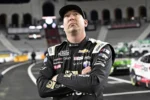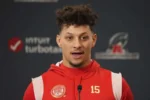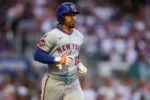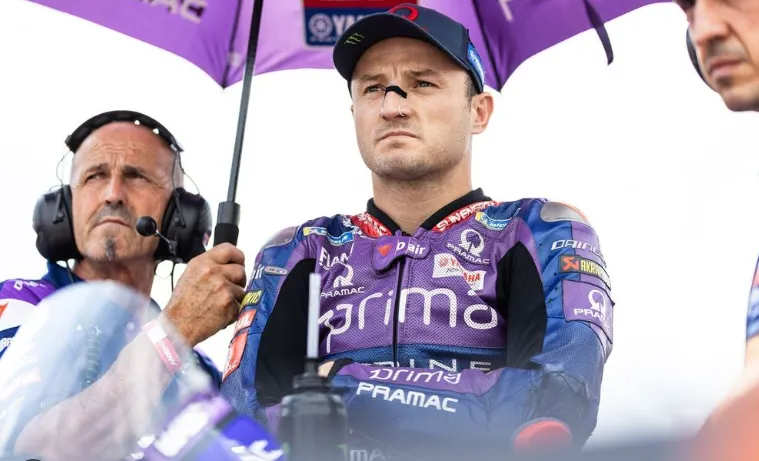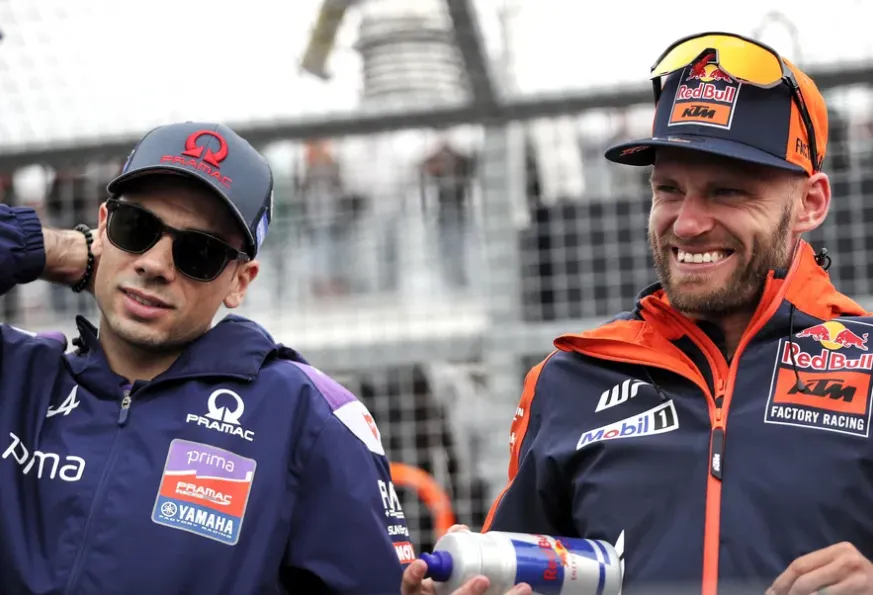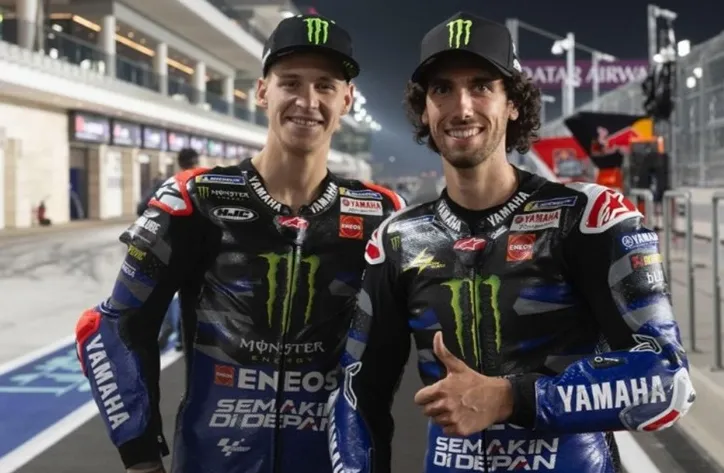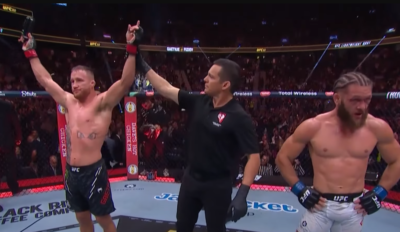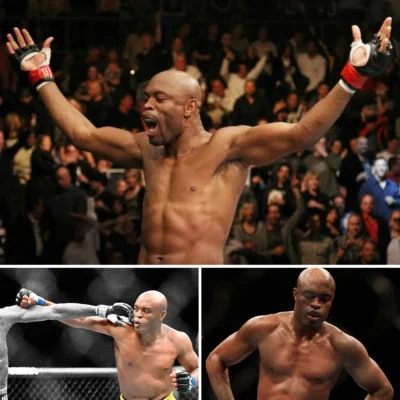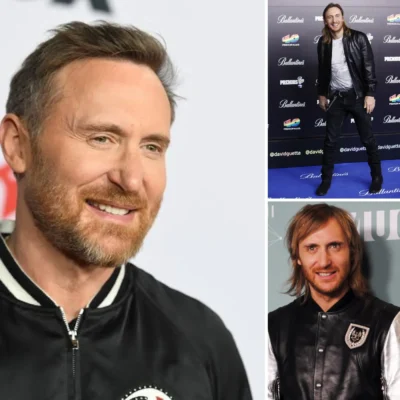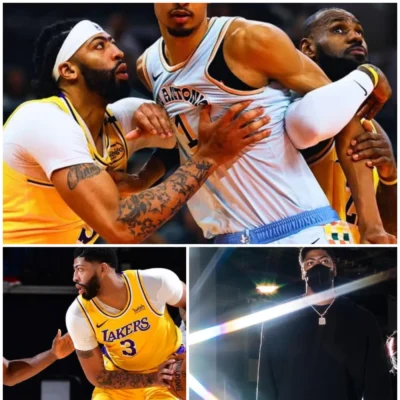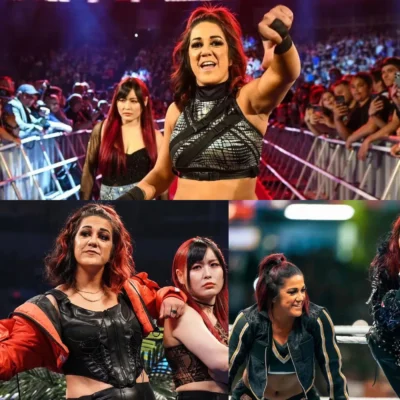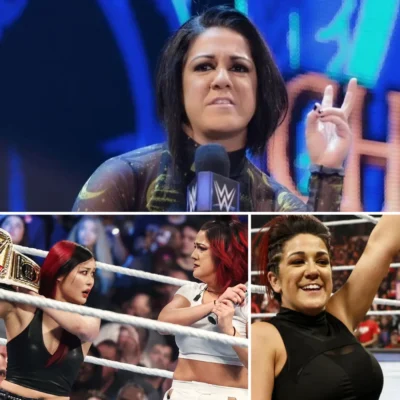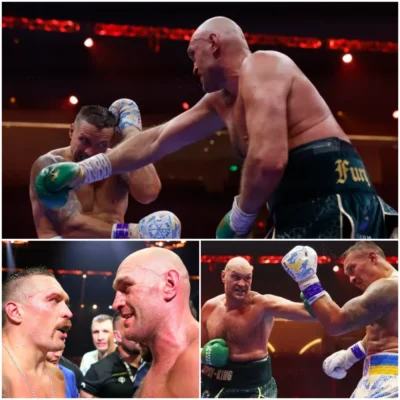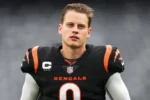
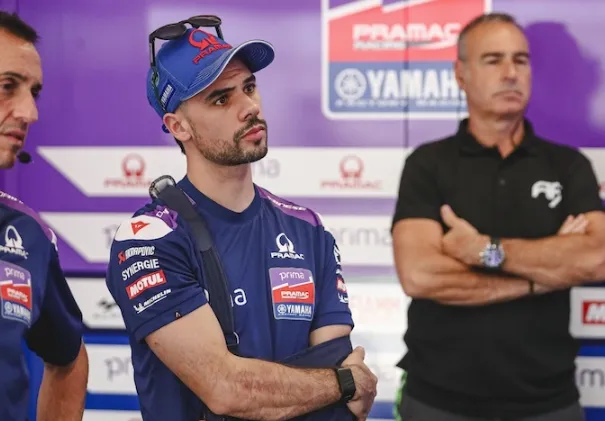
Did Massimo Bartolini Just Reveal Why Miguel Oliveira Is the Key to Unlocking Yamaha’s Full Potential This Season?
In the chaotic, ever-evolving world of MotoGP, technical directors don’t often tip their hand. But in a rare and revealing moment, Yamaha’s Massimo Bartolini may have just confirmed what many paddock insiders have quietly speculated for months: Miguel Oliveira could be the missing link in Yamaha’s quest for MotoGP resurgence.
As the 2025 season unfolds and manufacturers scramble to optimize performance amid a fiercely competitive grid, Yamaha finds itself in a critical rebuilding phase. And at the heart of that process? Not a marquee signing or radical new aero kit, but a Portuguese rider with precision, poise, and a riding style that may hold the blueprint for the M1’s future.
Miguel Oliveira’s Return Is More Than Just a Rider Comeback
After missing several early rounds due to a nagging shoulder injury, Miguel Oliveira returned to action at the French Grand Prix in Le Mans—a moment that signaled far more than a medical recovery. To Yamaha’s senior technical team, his return represented a restoration of a vital development pillar.
Speaking candidly with SPEEDWEEK.com, Massimo Bartolini, Yamaha’s new technical leader in the premier class, explained how Miguel’s absence left a void in the feedback loop for the M1’s evolution.
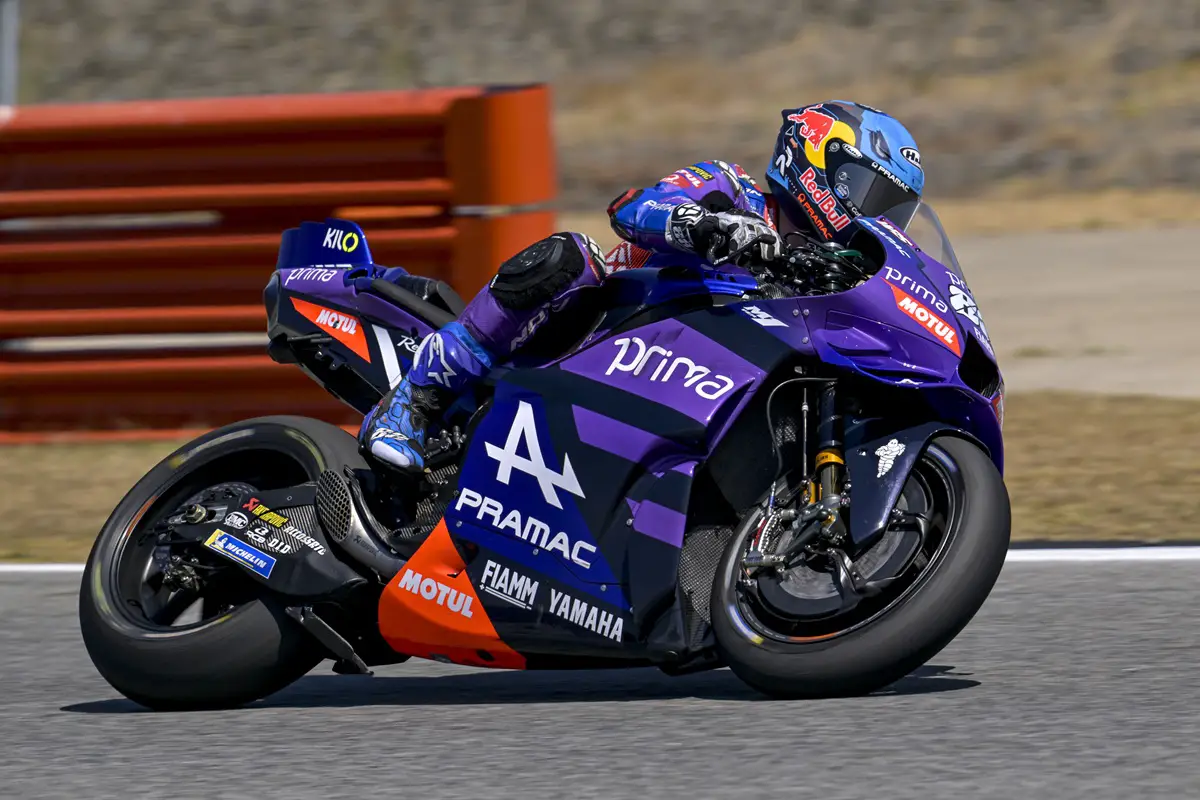
“We need guidance from many different angles… Jack [Miller] and Augusto [Fernández] come from the same bike, while Miguel brings Aprilia experience,” Bartolini revealed.
This wasn’t just about more data. This was about unique insight from a rider who had previously shaped a different European project. Miguel’s past experience with Aprilia and KTM made him an outlier in Yamaha’s current test ecosystem—and that’s exactly why he’s so valuable.
Why Miguel’s Riding Style Unlocks a New Dimension for Yamaha
Modern MotoGP development hinges on more than raw lap times. It’s about extracting subtle behaviors from the machine—especially when it comes to tire management, throttle control, and corner exit drive. This is where Miguel Oliveira shines.
According to Bartolini, Oliveira’s distinctive riding style brings a much-needed contrast:
“He has a very unique style… I’m particularly curious about how he manages tires on certain circuits. We missed that.”
In the ultra-precise environment of MotoGP, such differences can illuminate previously overlooked areas of bike behavior. Where one rider may suffer in edge grip, another may unknowingly compensate with braking technique. For Yamaha, Oliveira is the rare rider who pushes the M1 differently, forcing engineers to see problems—and potential solutions—from new perspectives.
A Technical Puzzle That Requires a Unique Piece
Bartolini’s statements also reveal a deeper truth: Yamaha’s 2025 campaign is not merely about rebuilding performance—it’s about rethinking the foundation of how their bike is evaluated, developed, and refined.
While Augusto Fernández and Jack Miller bring important feedback, they share a similar technical heritage, having both ridden KTM machinery. That alignment can skew development in favor of certain habits or biases.
In contrast, Miguel Oliveira introduces technical diversity. His past with Aprilia—an increasingly competitive manufacturer known for its innovation in chassis balance and corner stability—means he approaches Yamaha’s M1 from a different mental and mechanical playbook.
Bartolini acknowledged this clearly:
“A part of that development process was missing. Having Miguel back helps us restore it.”
In other words, Oliveira isn’t just another test case—he’s a catalyst for change.
The Oliveira Factor: Bridging Rider Experience with Technical Direction
Let’s consider where Yamaha stands now: Their once-dominant M1 has fallen behind rivals in aerodynamics, rear grip, and in some cases, top speed. Yet they continue to place hope in rider feedback to evolve the bike in a smarter, more responsive direction.
This is why Oliveira’s experience is so highly regarded. He isn’t just riding laps. He’s interpreting the bike through the lens of what Aprilia did differently, what KTM tried and failed at, and what Yamaha may be missing in its pursuit of consistency and balance.
And for a team desperate to reclaim ground against Ducati and KTM, that perspective is golden.
Why Bartolini’s Comments Mark a Shift in Yamaha’s Development Philosophy
Since joining Yamaha, Massimo Bartolini—formerly a Ducati technical guru—has pushed for change. He’s brought with him an openness to reinterpret Yamaha’s traditional approach, which historically favored smoother, corner-speed-focused riders like Jorge Lorenzo and Fabio Quartararo.
But the new era of MotoGP demands adaptability—riders who can brake late, manage tire degradation, and handle the torque-driven aggression of modern power units. Bartolini’s embrace of Miguel Oliveira’s input suggests a willingness to break from Yamaha’s rigid past.
He isn’t just building a bike around numbers or trends—he’s assembling a mosaic of rider insight, and Oliveira brings a critical tile to that picture.
Augusto Fernández’s Role vs. Miguel Oliveira’s Impact
To be clear, Bartolini didn’t downplay Augusto Fernández’s contributions. He praised the young Spaniard’s development trajectory, even suggesting that Augusto could grow into a valuable long-term piece of the puzzle.
However, the contrast was evident:
“As a rider, Augusto is still new to this kind of work… Miguel has already been part of the technical base of our program.”
This distinction matters. While Fernández is still learning to lead development efforts, Oliveira arrives as a ready-made analyst. He knows what to look for, what questions to ask, and how to provide data that triggers design innovation.
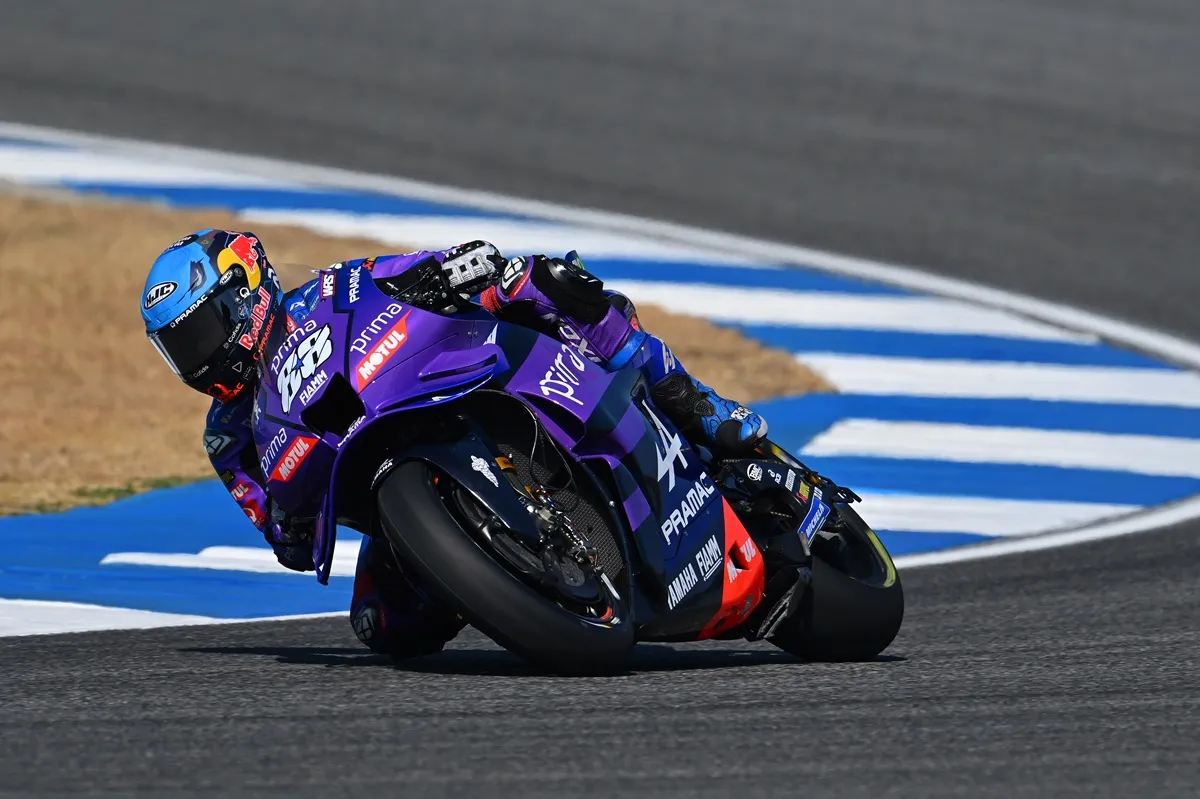
Could Oliveira Be the Secret to Quartararo’s Resurgence?
While Oliveira isn’t the lead factory rider, his influence may indirectly benefit Yamaha’s biggest star: Fabio Quartararo. With more varied feedback, engineers can now better triangulate their data, identifying setups that preserve rear grip, reduce chatter, or improve exit drive.
That collaborative advantage could be exactly what Quartararo needs. The 2021 World Champion has struggled to adapt to the M1’s evolving characteristics, often complaining of understeer and a lack of corner exit power. But with Oliveira offering comparative analysis, the team can better isolate key deficiencies.
In this way, Oliveira becomes the keystone between data and decision.
Looking Ahead: What Can We Expect from Oliveira’s 2025 Season?
As Oliveira returns to full fitness, fans and engineers alike will be watching closely. His style, combined with his technical understanding, makes him an ideal candidate to lead Yamaha through its most critical development juncture in years.
While he may not be chasing podiums every weekend—at least not yet—his value lies in the long game. If Yamaha manages to incorporate his insights into their 2025 and 2026 bike evolution plans, they could very well rejoin the elite ranks by mid-season or early 2026.
And if they do, many will point back to Bartolini’s comments as the moment when that transformation quietly began.
Final Thoughts: Oliveira Isn’t Just a Rider—He’s a Recalibration
In a championship defined by milliseconds, Yamaha needs every possible advantage. For years, they’ve relied on tradition, hoping that smoother riders and minor tweaks would return the M1 to glory.
But as Massimo Bartolini’s comments confirm, the future demands a different approach. It demands riders who challenge assumptions, who bring external influence, and who push engineers to look beyond the familiar.
Miguel Oliveira is that rider. He’s not just filling a seat. He’s providing direction, depth, and dimensionality to Yamaha’s journey forward.
As 2025 unfolds, Yamaha’s hopes won’t rest on horsepower alone—but on insight. And if Bartolini’s instincts are right, Oliveira may be the brain behind the breakthrough.



